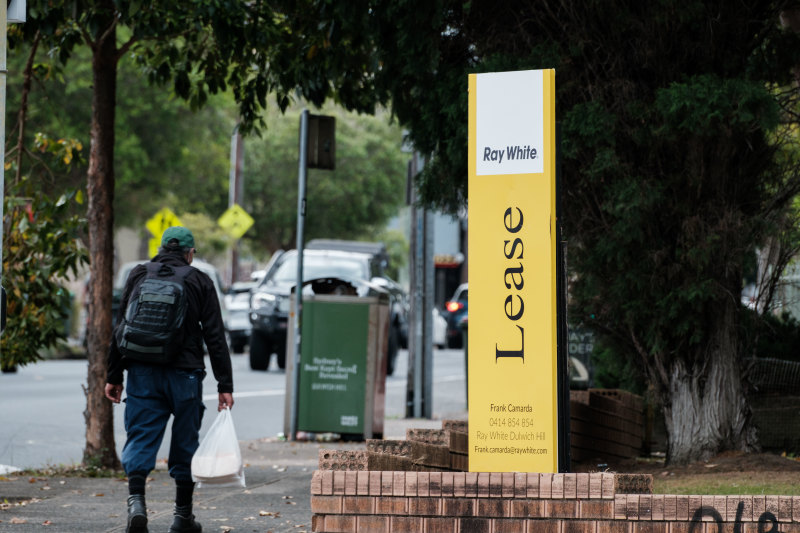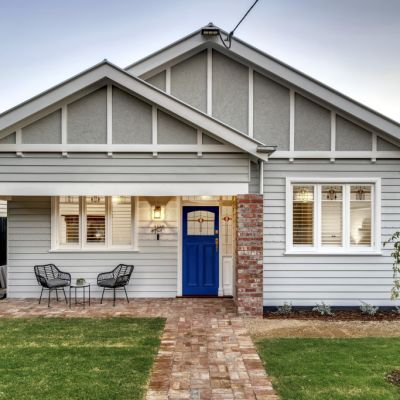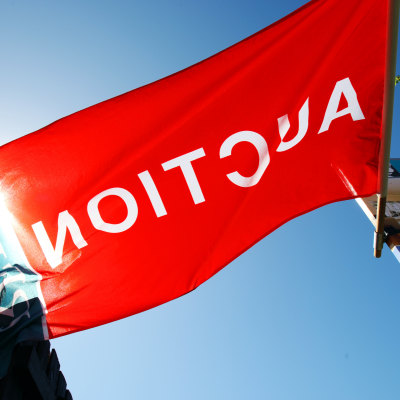Australian renters would be nearly $4b better off under a rent freeze
Renters in Australia’s capital cities would have saved $3.8 billion over the 12 months to March if rents had been frozen, new analysis reveals.
The amount saved per rental household differs by capital city. Sydney households would have saved $2741, while Melbourne households would have saved $2537.
The Better Renting analysis of Domain Rent Report data showed the savings ranged from $2998 in Perth to $0 in Hobart, while Brisbane households would benefit by $2158. Better Renting is a renters’ advocacy group; the figures were reached by comparing Census data on the number of each property type and size in the capitals with the change in asking rents for each in Domain data.
A freeze, if it had been implemented a year ago, would have saved renters a potentially life-changing amount of money in a cost-of-living crisis, experts said. However, others warn the move would have caused landlords to flee the rental market en masse and drive up rents further.
A rent freeze has been part of the national housing conversation since it was proposed by Australian Greens housing spokesperson Max Chandler-Mather in 2022. The proposal was widely panned by economists and the housing industry but has become a favoured solution to runaway housing costs by tenants and their advocates.
The analysis comes as the Greens release fresh Parliamentary Library figures which show renters would save $5.3 billion over the next 12 months if rents were frozen now, or $2424 per household. Tenants would have saved $6.7 billion over the past two years if a freeze had been implemented in 2022, the Library figures show.

Better Renting executive director Joel Dignam said the huge figures showed that rent increases should be taken seriously as a contribution to cost-of-living pressures.
“If people’s energy or groceries bills were going up $3000 a year, it would be the subject of talkback radio every month,” he said. “With rent, it’s almost treated as the way things are.”
“If it had been done, it would be $3.8 billion in renters’ pockets today … But for many people, what these increases have meant is not just paying more rent but also getting kicked out of your home. These are people who are struggling to pay for their basic needs.”
Dignam said the analysis used asking rents and did not capture existing tenancies but said it was intended to be high-level. Dignam offset this shortcoming by weighting increases on Domain data against the percentage increases recorded in ABS figures.
AMP chief economist Shane Oliver said the Better Renting figures appeared to be correct, when taking the analysis’ shortcomings into account.
The Resolve Political Monitor, conducted for this masthead by Resolve Strategic, last month revealed that 55 per cent of voters would struggle to pay for a major expense such as repairing a car or replacing a fridge.
“A $2,424 saving might not mean much to property investors like the prime minister, but for many renters, it means food on the table for their kids, a desperately needed trip to the dentist or a year’s worth of electricity bills,” Chandler-Mather said in a statement.
Tenants Union NSW chief executive Leo Patterson Ross has long compared housing costs to those of other essential services, which are more tightly regulated by governments.
“We haven’t seen the same kind of action around rent prices even though we’re talking about many thousands of dollars per year,” he said. “We need to see a strategy, and we haven’t yet seen one that has a credible path to reducing the burden of rent on people.
“The point for us is: it’s well beyond something we should expect, particularly low-income households, to be managing these expenses from their own households.”
Real Estate Institute of Australia president Leanne Pilkington said a rent freeze would cause rents to rise.
“Analysis like that doesn’t factor in the fact that landlords would potentially be more likely to sell their rental properties if they were unable to put their rents up,” she said. “The impact that then has is there is less supply, and rents will then go up.
“[$3.8 billion] is absolutely a compelling figure, but we can’t look at it in isolation. With any policy, there are unidentified consequences.”
Professor of economics at UNSW Business School Richard Holden said the modelling was too simple to give a reliable figure and would need a more complicated model that would take into account a predicted change in supply caused by capping rents.
The Greens’ rent freeze proposal would not allow rents to go up for two years, and cap them at 2 per cent every two years to allow wage growth to catch up.
Housing Minister Julie Collins did not answer questions about the rent freeze proposal and instead pointed to a $25 billion spend the government said would increase the housing supply. “At the centre of this new investment is an ambitious target to build 1.2 million well-located homes across the country from 1 July this year,” she said in a statement.

“Independent analysis of our supply plan by the Grattan Institute found that it could put significant downward pressure on rents, saving renters $32 billion in payments to landlords and real estate agents over the next decade.”
Government moves to increase the supply of housing have recently come under fire for focusing on housing approvals rather than completions, as the latter figure has been hampered by high costs of doing business in the construction sector. Supply side solutions are not expected to bring any short-term relief to renters.
Liberal housing spokesperson Michael Sukkar panned the rent freeze proposal. “It would definitely lead to less rental stock being available and less rental stock ever being built in the future,” he said in a statement.
Canberra, the city that would have benefited least if rents were frozen last year at $115, has had a form of rent control in place since 2019. Landlords are limited to increasing rent by 110 per cent of yearly rental inflation in the territory.
Red Brick Properties principal Nalin Ratnaike said Canberra’s rental market was weak. The city recorded a vacancy rate of 1.4 per cent, the highest in the country.
“We have a property there we were renting 18 months ago for $680, and it’s been vacant for just over two months,” he said.
Ratnaike said the rent control legislation had less of an effect than a flight of blue-collar professionals due to the high cost of living and rents.
Tulip said the ACT’s rent control wasn’t strict enough to make a difference. “The critical problem in the housing market, and even Australian society, is we’re not building enough housing. Like it or not … we have a market economy where housing is built by private builders and private investors. And if you tell [them] they can’t make a return, they won’t build it.
“And if landlords are told what rent they can apply and they have thousands of applicants, they will choose who to rent to … It will be wealthy, educated professionals from privileged backgrounds who will get rentals.
“People with spotty employment history or from an ethnic background that the landlords don’t like, they won’t get housing.”
Patterson Ross said freezes were not intended as a long-term solution, and were instead a move to protect the vulnerable from becoming homeless or poorer Australians’ standard of living.
“Freezes are a temporary crisis measure that can’t last as long but have to come in before everything goes wrong. The problem is now we’re already in the hole.“
We recommend
We thought you might like
States
Capital Cities
Capital Cities - Rentals
Popular Areas
Allhomes
More










